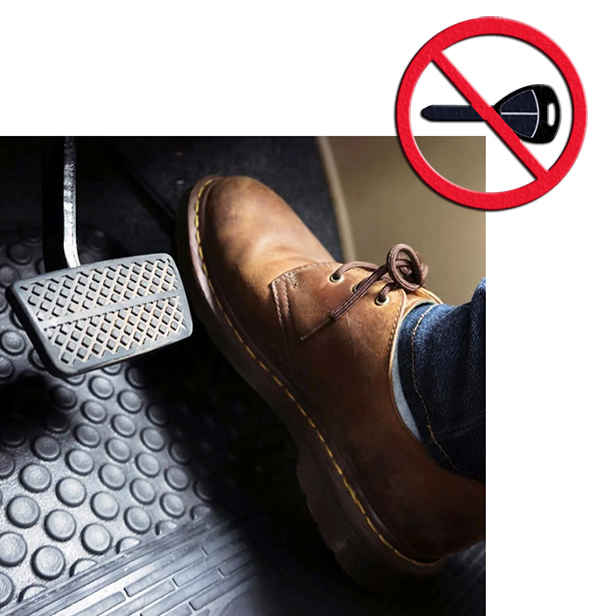Why shouldn’t you turn off your car if the accelerator sticks?
Why It’s Risky to Shut Off Your Vehicle During an Accelerator Stick Situation?
Encountering a stuck accelerator pedal can be a nerve-wracking ordeal for any driver. The knee-jerk reaction for many is to shut off the car immediately. However, this seemingly quick fix can spiral into a series of unintended consequences, potentially making matters worse.
Let’s delve into why shutting off your car during an accelerator stick scenario isn’t advisable, and explore alternative actions to take.
Additionally, we’ll uncover some intriguing insights into this predicament.

Reasons to Avoid Shutting Off Your Car:
Loss of Vital Assistance
Disengaging your car’s engine results in a loss of essential aids like power steering and braking assistance. This absence makes it notably challenging to maneuver and halt the vehicle, particularly during critical moments.
Lack of Command
Turning off the engine relinquishes your command over the vehicle’s speed and trajectory, amplifying the risk of accidents, especially in congested traffic or at high velocities.
Steering Wheel Lock Risks
Some contemporary vehicle models come equipped with steering wheel locks that activate upon engine shutdown. This additional complication further hampers your ability to steer the vehicle safely.
Potential for Additional Damage
Abruptly halting the engine with a stuck accelerator can potentially inflict harm on various components, example: the transmission or engine, due to the abrupt change in momentum.
Recommended Actions

- Transition to Neutral
Initiate the process by shifting the transmission into neutral. This action disengages the engine from the wheels, empowering you to regulate the car’s speed with the brakes while the engine remains operational.
- Brake Firmly
Employ firm pressure on the brakes to decelerate the vehicle. Be prepared to exert more force than usual, as you won’t benefit from the assistance of engine braking.
- Activate Emergency Signals
Illuminate your hazard lights to alert other motorists to your predicament. This proactive measure aids in averting rear-end collisions and signaling that you’re encountering an issue.
- Secure a Safe Stop Location
After successfully reducing speed, guide the vehicle to a secure stopping spot away from traffic. Seek out ample shoulders, parking lots, or side streets conducive to safely halting the car.
Important Information

Electronic Throttle Control (ETC):
Numerous contemporary vehicles employ electronic throttle control systems susceptible to malfunctions that may lead to accelerator pedal sticking. These systems rely on sensors and computer-controlled actuators instead of traditional mechanical linkages.
Recall Histories:
Several car manufacturers have issued recalls pertaining to accelerator pedal malfunctions in the past. These recalls underscore the significance of promptly addressing potential safety issues to forestall accidents.
Driver Education Significance:
Many driver training programs incorporate guidance on navigating emergency scenarios like a stuck accelerator. Equipping oneself with the knowledge to respond calmly and effectively can prove pivotal in preserving lives during critical junctures.
Legal Ramifications:
In certain jurisdictions, shutting off the engine while in motion could contravene traffic regulations, potentially resulting in penalties or citations. It’s imperative to acquaint yourself with local traffic laws to grasp your rights and obligations as a driver.
In summary, though the impulse to power down your vehicle in the face of a stuck accelerator may be strong, doing so can entail substantial risks. Instead, transitioning to neutral, applying the brakes, and safely guiding the vehicle to a stop is the advised course of action.
Being prepared and adept at handling emergencies can significantly bolster road safety for all.












